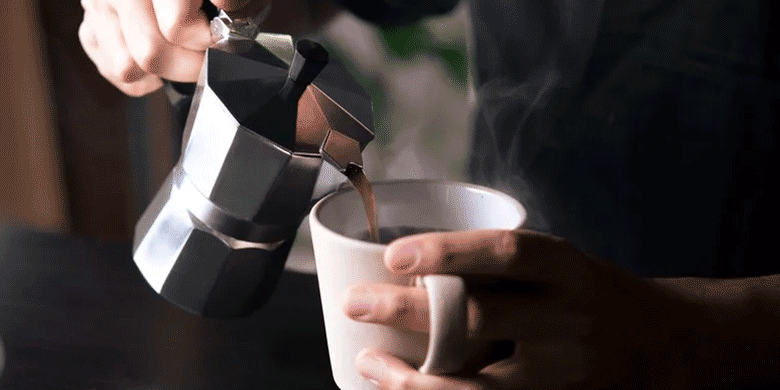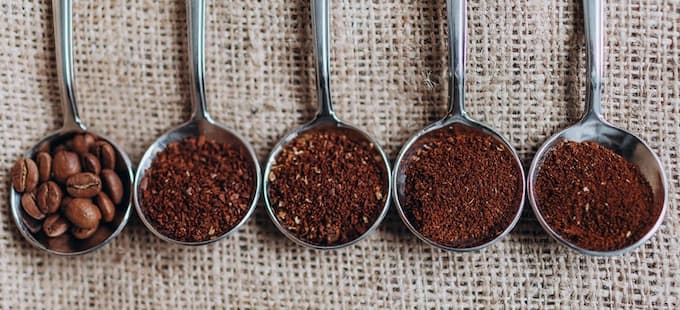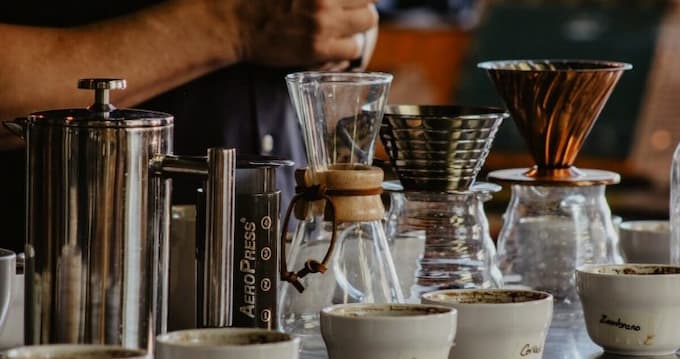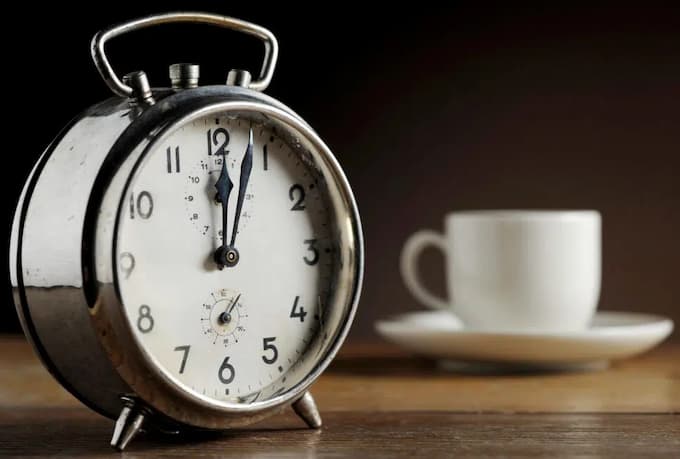
7 March, 2024
Brewing the Perfect Coffee: A Journey to Liquid Gold
Hello, coffee aficionados! If you're like most people, a good cuppa is an essential part of your day. Whether it's your morning kickstarter or an afternoon pick-me-up, the allure of coffee is undeniable. But ever wondered how to brew that perfect cup? Let’s discuss the world of coffee brewing and transform your everyday coffee ritual into an art form.
1. Bean There, Done That: Choose Quality Beans
Ah, the beauty of coffee beans! Like wine grapes, where they’re grown makes a world of difference. Each region, with its unique climate and soil, gives birth to beans with distinct tastes and aromas.
Ethiopian Beans: Often regarded as the birthplace of coffee, Ethiopia boasts beans that can surprise you with their wine-like or tea-like quality. Expect a symphony of fruity notes – think blueberries or even citrusy hints.
Brazilian Beans: As the world's largest coffee producer, Brazil offers beans that are a staple in many blends. They tend to have a more chocolatey and nutty profile, making them perfect for those who love a classic, smooth cuppa.
Variety is the Spice of Life: Don't stop at just these two. From the floral and citrusy beans of Kenya to the earthy richness of Sumatran coffee, there’s a whole world to explore. So, be a coffee globetrotter and let your taste buds journey around the world.
2. Freshness Counts: Because Stale Just Doesn’t Cut It
Let’s break it down. Coffee beans are, essentially, the roasted seeds of a cherry-like fruit. And like all things fresh, they're at their best shortly after being roasted.
The Peak Period: Typically, coffee beans hit their flavour peak a few days post-roasting and maintain their dynamism for about a month. This is when you'll get the most aromatic and flavour-packed brew.
Avoid Pre-ground: Look, convenience has its place, but when you grind beans, you’re breaking down their natural protective barrier. This means they start losing flavour faster due to exposure to air and moisture. Buying whole beans and grinding just before brewing? Now that's how you ensure a lively, vibrant cup every time.
Storage is Key: Got your beans? Perfect! Now, store them in an airtight container in a cool, dark spot. And, just a heads up, the fridge ain't your friend here. Too much moisture.
Your coffee journey begins with the beans. They're the foundation, the heart and soul of your brew. So, splash out a bit. Experiment. Explore. And remember, in the realm of coffee, freshness is queen. So, here's to the bean - the start of every coffee lover's dream!
3. The Grind: It's Not Just a Dance Move

Coffee making is a bit like chemistry. You've got your beans (chemicals) and your method (experiment), and the grind is your catalyst. It affects how quickly water can pass through the coffee and how much it extracts from the beans. Get the grind wrong, and you could end up with a brew that's too weak or too bitter. Striking that balance? Now that's where the magic happens.
Coarse Grind: The Rugged Individualist
- Texture: This one's chunky, like sea salt. When you pinch it, it feels hefty and gritty.
- Perfect For: French presses (or plunger, as some might say). The larger particles allow for a slower extraction, which works wonders with this immersion brewing method.
- Taste Note: A cup that's robust and full-bodied.
Medium Grind: The Middle Path Maestro
- Texture: Not too rough, not too fine. It's reminiscent of beach sand underfoot on a summer's day.
- Perfect For: Drip coffee makers. The water drains steadily through the coffee, extracting flavour as it goes.
- Taste Note: A balanced brew with a smooth profile.
Fine Grind: The Delicate Dancer
- Texture: Slightly smoother, akin to table salt. It's got a consistent texture that's finer than beach sand.
- Perfect For: Espresso machines. The water is forced through the coffee quickly under pressure, so a finer grind ensures optimal extraction.
- Taste Note: Rich, bold, with a pronounced depth.
5. Extra Fine: The Sophisticated Sipper
- Texture: This is the powder room of coffee grinds. Silky, almost like confectioner's sugar.
- Perfect For: Turkish coffee, a method that doesn't filter out the coffee grounds. The water and coffee brew together in harmony.
- Taste Note: Intense, thick, and indulgent.
The grind is where you, the brewmaster, have control. It's where you can play around, fine-tuning until you hit your perfect cup. Remember, coffee's a personal journey, and the grind's a massive part of that. So whether you're rocking out to music or brewing up, let's all appreciate a good grind!
4. Water: More than Just a Filler
It's easy to dismiss water as just the medium, but it's the majority of what's in your cup. It melds with the coffee grounds, carrying the flavours, aromas, and oils into your brew. Essentially, water's quality and temperature can make or break your coffee game.
Striking the Right Heat
- Temperature Matters: Ever had a coffee that's too bitter or too weak? The culprit could well be the water temperature.
- The Sweet Spot: You're looking for a range between 90°C and 96°C. It’s hot enough to extract those delicious coffee compounds but cool enough to keep the bitterness at bay.
- Pro Tip: After boiling your kettle, let it sit for a minute or so before pouring. This should bring it down to that optimal temperature range.
Pure Water, Pure Taste
- Tap's Not Top: Straight-from-the-tap water often contains minerals and impurities that can affect your coffee's taste. Ever noticed a metallic tang or, god forbid, a chlorine hint? That's tap water speaking.
- Filtered is Finer: Investing in a good water filter can drastically improve your brew. Filtered water ensures a clean and clear taste, letting the coffee beans shine.
- Mineral Balance: Some minerals in water can actually enhance coffee's flavour. But too much of anything is never good. Softened water can make your coffee taste flat, while very hard water can lead to over-extraction and bitterness.
A barista once said, "Coffee is 98% water, so don't skimp on that 98%." Whether you're a casual coffee drinker or a budding coffee connoisseur, understanding and respecting the role of water will elevate your brew to the next level. So, next time you make a cuppa, give a little nod to the humble water for its stellar contribution.
5. Brewing Techniques: Find Your Fit

Ah, the art of brewing coffee. It's not just about pouring hot water over ground beans. It's an experience, a ritual, a moment to savour. And, with so many ways to brew up a storm, there's a technique to suit every coffee lover. Let's delve deep into some popular methods:
1. French Press: Dive into Depth
- The Basics: Also known as a press pot or plunger pot, the French Press is about as traditional as it gets.
- Why We Love It: It allows the coffee grounds to steep directly in the hot water, resulting in a thick, rich coffee. No filters here, so you get all the oils and flavours in your cup.
- Brewer’s Tip: Use coarsely ground coffee, pour in hot (not boiling) water, let it steep for 4-5 minutes, and then gently plunge. Pure, unadulterated coffee bliss.
2. Drip Coffee Maker: The Morning Ritual
- The Basics: Ground coffee goes in a filter, water drips through, et voilà – coffee! It's simple, straightforward, and super reliable.
- Why We Love It: It's perfect for brewing large batches, making it a morning favourite. Plus, with modern machines, you can time your brew to be ready when you wake up.
- Brewer’s Tip: Use medium-ground beans and ensure your water's temperature is just right for optimal extraction.
3. AeroPress: The Innovative Brew
- The Basics: This portable brewer uses air pressure to push water through coffee grounds. Think of it as a syringe for coffee.
- Why We Love It: It’s fast, compact, and versatile. Depending on your technique, you can make anything from a bold espresso to a smooth, filtered-style coffee.
- Brewer’s Tip: Experiment with different grind sizes and brewing times. The AeroPress is all about personalisation.
4. Espresso Machine: The Coffee Connoisseur's Choice
- The Basics: An espresso machine forces hot water through finely-ground coffee under high pressure. The result? A concentrated coffee shot with a lovely crema on top.
- Why We Love It: It's the base for so many coffee drinks! Cappuccino, latte, mocha – they all start with a good espresso.
- Brewer’s Tip: Ensure your coffee is finely ground, almost powdery. Tamping (compressing the coffee in the portafilter) is key. Get it right, and you'll have a shot worthy of any café.
From the straightforward drip to the mighty espresso, the world of coffee brewing is vast and varied. But whether you're a purist, an experimenter, or someone who just wants their morning fix, there's a method out there with your name on it. So go on, explore, experiment, and most importantly, enjoy every sip
6. The Golden Ratio: Coffee to Water
Ahh, the perennial quest for the perfect cup of joe! While many factors play into brewing that delightful beverage, one of the most crucial elements is the balance of coffee to water. It's all about the golden ratio. But what does that mean? Let's dive into the magic behind the numbers.
Understanding the Ratio
Before we start talking specifics, it's vital to understand what we mean by the 'golden ratio' in the world of coffee. At its core, it's the perfect balance of coffee to water, which extracts the right flavours without making your brew too strong or too weak.
Starting Point: The Standard Measure
The often-recommended starting point is 1 to 2 tablespoons of coffee for every six ounces of water. This is a pretty safe bet for a balanced cup that appeals to a broad range of tastes.
Flavour Play: Tweaking to Taste
Now, here’s where the fun begins. The ‘standard measure’ is just a guide. The beauty of coffee is its versatility:
- For the Bold: If you’re someone who likes your coffee with a bit of kick, edging towards the 2 tablespoons for every six ounces will give you a stronger, more robust flavour.
- For the Mellow: Prefer something gentler on the palate? Use just a tablespoon for those six ounces of water, and you'll get a milder, smoother drink.
- Middle Ground: Of course, you can always find a middle ground. Somewhere between 1 and 2 tablespoons might just be your sweet spot.
Tools Make a Difference
If you're really keen on consistency, consider investing in a coffee scale. It allows for precision, ensuring you use the exact amount of coffee every time. Remember, different beans and grinds can have varying densities, so what looks like the same amount might not always be.
The Final Brew
At the end of the day, coffee is personal. The golden ratio is more of a guiding principle than a strict rule. It's about experimenting, tweaking, and refining until you find your perfect blend. So, pour, sip, adjust, and repeat. Your ideal cuppa is out there waiting!
7. Brew Time: Patience, Grasshopper

A good brew is like a fine art; it takes patience, precision, and a smidge of passion. You might have the best beans and the purest water, but if you muck up the timing, you're not doing your cuppa any justice. Below are some brew times and why they matter.
The Espresso Sprint
Ah, espresso! It's the Usain Bolt of the coffee world – fast, powerful, and packed with intensity. When making an espresso:
- Duration: Aim for around 25-30 seconds.
- The Science Bit: Espresso machines use pressure to force water through the fine grounds. This rapid extraction results in a concentrated shot of coffee.
- Tip: Watch for the "golden crema" on top – it's a sign of a well-brewed espresso.
The Thoughtful French Press Soak
The French Press (or plunger, if you're down under) is the antithesis of the espresso. It's all about taking it slow:
- Duration: A good 4 minutes of steeping time is recommended.
- The Science Bit: This method allows coffee grounds to mingle with the water, extracting flavours slowly and methodically.
- Tip: Give it a gentle stir halfway through to ensure all the grounds are immersed and doing their thing.
Drip Coffee: The Reliable Mate
Drip coffee makers are the go-to for many homes and offices. It's about setting and forgetting (until that delicious aroma reminds you):
- Duration: Generally, it's a 5-minute affair, but it can vary based on the machine.
- The Science Bit: Water drips through the medium-coarse grounds, collecting flavours as it passes through the filter.
- Tip: Make sure you're using the right amount of water and coffee. Overloading can result in longer brew times and a potential over-extraction.
8. Finishing Touches: Make It Yours
Brewing the perfect coffee doesn't end when the liquid hits the cup. That's merely the canvas. The real artistry is in the final flourish, where you stamp your identity on your brew. Whether you're a minimalist who loves the robust flavour of black coffee or you've got a sweet tooth, the coffee world is your oyster.
Milk Magic
Whether you're into full cream, skim, almond, soy, or oat, milk can transform the texture and taste of your coffee:
- Steamy and Frothy: For cappuccino lovers, frothy milk is the heart and soul of the drink.
- Silky Smooth: A flat white or latte demands milk steamed to velvety perfection.
- Cold Splash: Some days, just a dash of cold milk is all you need.
Sweeten the Deal
Sugar, honey, or perhaps a flavoured syrup? Sweeteners come in all shapes and sizes:
- Classic Sugar: Granulated, brown, or raw – they each bring something unique.
- Liquid Gold: Honey gives a natural sweetness and can add a floral note.
- Syrup Splurge: Caramel, vanilla, hazelnut – the choices are endless, and each one can make your coffee an indulgent treat.
Spice It Up
Why not venture into the realm of spices and take your coffee to the next level?
- Cinnamon Swirl: A sprinkle of cinnamon can give your coffee a delightful warmth.
- Cocoa Kiss: A dusting of cocoa powder can bring a chocolatey depth.
- Nutty Notes: Nutmeg or even a hint of cardamom can be a game-changer for your brew.
Above all, remember this: there are no hard and fast rules. Your cup, your choices. It's about discovery and joy. So, play around, mix and match, and craft a cuppa that warms not just your hands, but also your soul. Because at the end of the day, the best coffee is the one that brings a smile to your face.
Wrap Up: Sip, Savour, Repeat
Brewing the perfect coffee is a blend of science and art. While these guidelines will set you on the right path, the real magic happens when you experiment and find that sweet spot tailored just for you. So, grab your mug and let's raise a toast to the joy of brewing.
The Mugs Only Team


